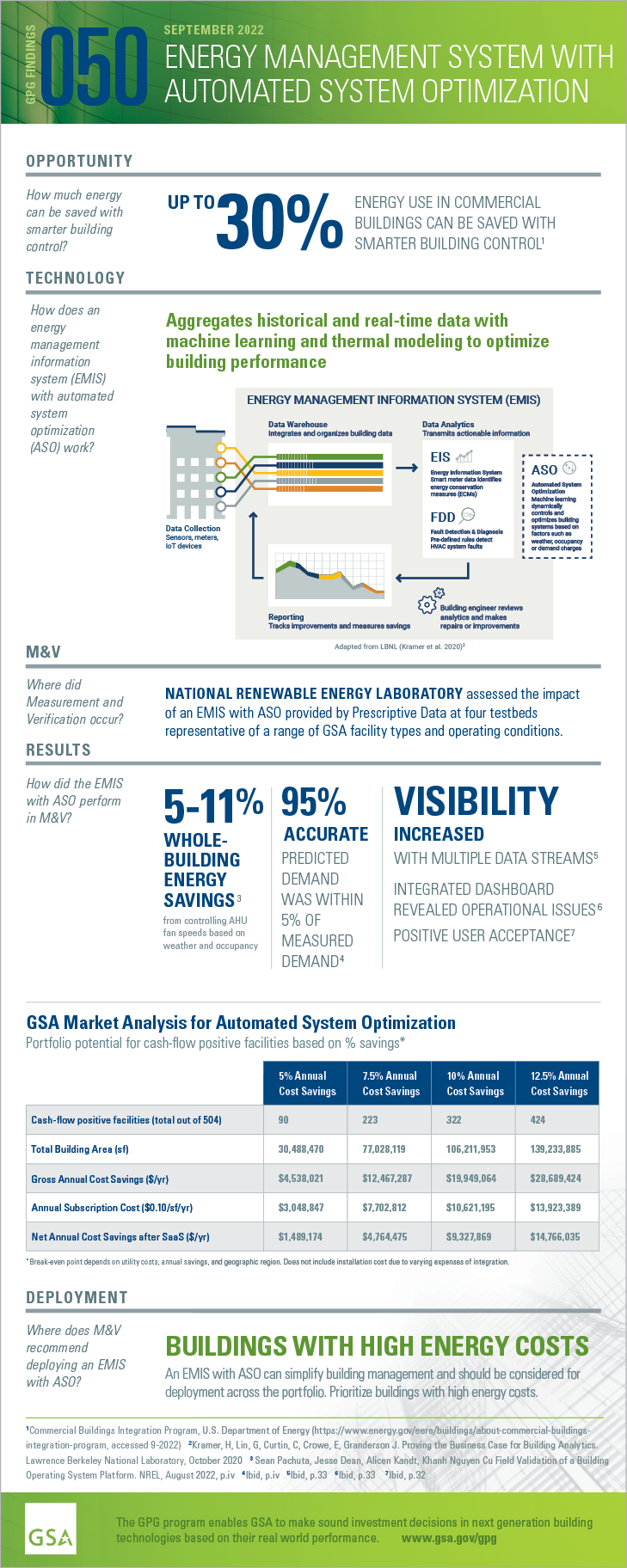Energy Management Information System with Automated System Optimization
By combining siloed building systems data with external information sources, like weather, into a single integrated platform, an energy management information system (EMIS) can provide real-time situational awareness and increase building efficiency.
Researchers found that using machine learning to optimize air handling units (AHUs) informed by weather and occupancy saved between 5% and 11% of whole-building energy. As buildings become more complex, an EMIS with ASO can simplify building management and provide ongoing energy savings. View full-size infographic. [PDF - 333 KB]
Reference above to any specific commercial product, process or service does not constitute or imply its endorsement, recommendation or favoring by the United States Government or any agency thereof.

 U.S. General Services Administration
U.S. General Services Administration
